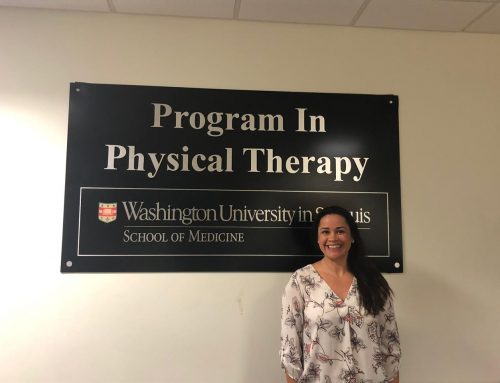Cerebral Blood Flow Changes and Cognitive Improvement in Chronic Stable Traumatic Brain Injuries Treated with Hyperbaric Oxygen Therapy
 Table of Contents:
≪ Further Study of the MRI Defined Determinants of Rehabilitation Outcome in Patients with Stroke.
≫ Opportunities for Improvement of Care of Medicare Beneficiaries with Acute Ischemic Stroke.
Search Results:
≫ Hyperbaric Oxygen After Global Cerebral Ischemia in Rabbits Reduces Brain Vascular Permeability and Blood Flow.
Links
Outline
OBJECTIVE: To determine if hyperbaric oxygen therapy in patients with chronic stable traumatic brain injuries can produce: 1) neurological and cognitive improvements; 2) changes in cerebral blood flow to ischemic penumbral areas as determined by ECD-Tc99m SPECT brain scanning.
BACKGROUND: Numerous studies have shown that cognitive improvement after severe traumatic brain injury (TBI) is most dramatic in the first six months after injury, and is fairly static after 18 months. Anecdotal reports exist that attest to the efficacy of hyperbaric oxygen therapy (HBOT) to improve post traumatic neurologic deficits by increasing blood flow in the ischemic penumbra despite protocol differences. Cerebral blood flow, speech, neurological and neuropsychometric testing have not been studied serially in patients undergoing HBOT for chronic stable TBI.
DESIGN/METHODS: Five patients with TBI, at least three years post injury, underwent 120 HBOT’s at 1.5 atmospheres absolute of oxygen for 60 minutes. They received a set of 80 HBOT’s, a five month rest, and a second set of 40 HBOT’s. Patients were studied sequentially to determine HBO’s effects on: cerebral blood flow, speech fluency, neurologic, neuropsychometric and progressive exercise testing. Six TBI controls were not treated with HBOT, but underwent serial SPECT scanning to study time related alterations in cerebral blood flow. Five non-TBI controls underwent SPECT scanning, one HBOT, and a repeat scan to study HBOT influence on cerebral blood flow in normal subjects. SPECT brain scans were performed serially on the HBO treated group. Scans were spatial and intensity normalized and subjected to statistical parametric mapping.
RESULTS: Serial SPECT imaging showed: TBI controls had no significant consistent change in CBF over time; non-TBI controls had essentially no influence from one HBOT upon CBF; the treated TBI patients had permanent increases in CBF to penumbral areas and a regression to a mean CBF range. In the HBO treated group, no changes were seen in progressive exercise and neurologic testing. Speech fluency improved in all cases, as did group mean scores of memory, attention, and executive function. Improvement peaked at 80 HBOT, suggesting a possible maximum length of treatment between 80 and 120 HBOT.
CONCLUSIONS: Our pilot study findings suggest that HBOT at 1.5 ATA is a promising therapy for permanently improving penumbral brain blood flow and cognitive function in chronic stable TBI where no improvement would have been expected.
 Table of Contents:
≪ Further Study of the MRI Defined Determinants of Rehabilitation Outcome in Patients with Stroke.
≫ Opportunities for Improvement of Care of Medicare Beneficiaries with Acute Ischemic Stroke.
Search Results:
≫ Hyperbaric Oxygen After Global Cerebral Ischemia in Rabbits Reduces Brain Vascular Permeability and Blood Flow.
Links
Outline
OBJECTIVE: To determine if hyperbaric oxygen therapy in patients with chronic stable traumatic brain injuries can produce: 1) neurological and cognitive improvements; 2) changes in cerebral blood flow to ischemic penumbral areas as determined by ECD-Tc99m SPECT brain scanning.
BACKGROUND: Numerous studies have shown that cognitive improvement after severe traumatic brain injury (TBI) is most dramatic in the first six months after injury, and is fairly static after 18 months. Anecdotal reports exist that attest to the efficacy of hyperbaric oxygen therapy (HBOT) to improve post traumatic neurologic deficits by increasing blood flow in the ischemic penumbra despite protocol differences. Cerebral blood flow, speech, neurological and neuropsychometric testing have not been studied serially in patients undergoing HBOT for chronic stable TBI.
DESIGN/METHODS: Five patients with TBI, at least three years post injury, underwent 120 HBOT’s at 1.5 atmospheres absolute of oxygen for 60 minutes. They received a set of 80 HBOT’s, a five month rest, and a second set of 40 HBOT’s. Patients were studied sequentially to determine HBO’s effects on: cerebral blood flow, speech fluency, neurologic, neuropsychometric and progressive exercise testing. Six TBI controls were not treated with HBOT, but underwent serial SPECT scanning to study time related alterations in cerebral blood flow. Five non-TBI controls underwent SPECT scanning, one HBOT, and a repeat scan to study HBOT influence on cerebral blood flow in normal subjects. SPECT brain scans were performed serially on the HBO treated group. Scans were spatial and intensity normalized and subjected to statistical parametric mapping.
RESULTS: Serial SPECT imaging showed: TBI controls had no significant consistent change in CBF over time; non-TBI controls had essentially no influence from one HBOT upon CBF; the treated TBI patients had permanent increases in CBF to penumbral areas and a regression to a mean CBF range. In the HBO treated group, no changes were seen in progressive exercise and neurologic testing. Speech fluency improved in all cases, as did group mean scores of memory, attention, and executive function. Improvement peaked at 80 HBOT, suggesting a possible maximum length of treatment between 80 and 120 HBOT.
CONCLUSIONS: Our pilot study findings suggest that HBOT at 1.5 ATA is a promising therapy for permanently improving penumbral brain blood flow and cognitive function in chronic stable TBI where no improvement would have been expected.





